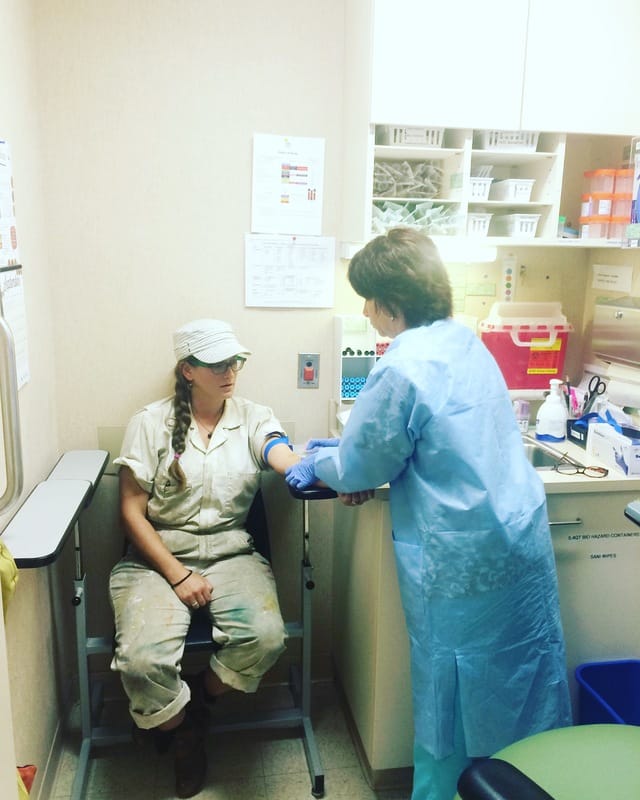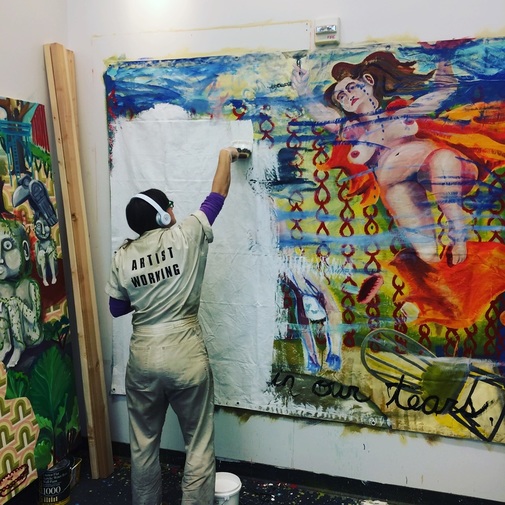 The End…Durational Performance as Artistic Research A year, in hindsight, is not a long period of time. It passes quickly when we pass through the days without reflection. How do we become more reflective? How do we change our perception to the quotidian and mark each day? One of the greatest benefits in engaging in a year-long project in which each day’s actions are marked, literally and figuratively on my suit, has been the time for reflection it has offered me. The performance has taken many turns. I had days where I questioned my own intentions and didn’t think that I would make it. But, the mind is a powerful adversary, to all our inclinations. Now, with only 9 days remaining, the morning ritual gesture of stepping into my sullied second skin, has become like clockwork…It happens with ease. I know that the end is near, and will be liberated from this obligation. It has been a contract with myself. Inserting myself into the canon. A daily program to instill a deeper, more grounded sense of worth as an art maker. I have said that the end of the performance on January 1st, 2017 will be like a death. Those who do not fear death, if there is such a person, may feel the same liberation when they know they are at the end of living. Someone has said, “Dying is easy, it’s the living that’s hard”.
1 Comment
 Jackson Pollack’s paintings were deemed “action paintings” by the art critic Harold Rosenberg in 1952. Rosenberg expounded on Pollack’s process and act of creating his famous drip paintings, dancing over his canvases laid flat on his studio floor. The method of painting becomes as important as the art produced, with the painting becoming the artifact of the gesture. I have been thinking of the abstract expressionist’s in the last half of my project, Artist Working, seeing the buildup of each day pass, adding; paint smears, food stains, filth, blood and other fluids to this second skin. Making the time, and work of my daily life become visible. My Artist Working uniform in this sense becomes a kind of location for the gesture of the work of daily living, and work of life. I have cared for my children in this uniform, tended to them when they are sick, carried them when they have fallen and skinned their knees. I have also cooked, worked, gardened, planted, and painted. Allan Kaprow said in his 1983 Essay, The Real Experiment that there were two histories of western art, art-like art and life-like art. The former, was identifiable as art because it followed the history of what art has looked like throughout the 19th century, it could also be found in the places where art was typically found, in galleries and museums. Life-Like art, in contrast, was not necessarily found in these “typical” art locations, and it was much more difficult to distinguish from real life, because it resembled nothing like the art of the previous century. I work across both these histories, and each method represents the multiple ways that I process and experience the world; through images, words, and action. |
Rebecca Kautz: Archives
June 2024
Categories |
 RSS Feed
RSS Feed